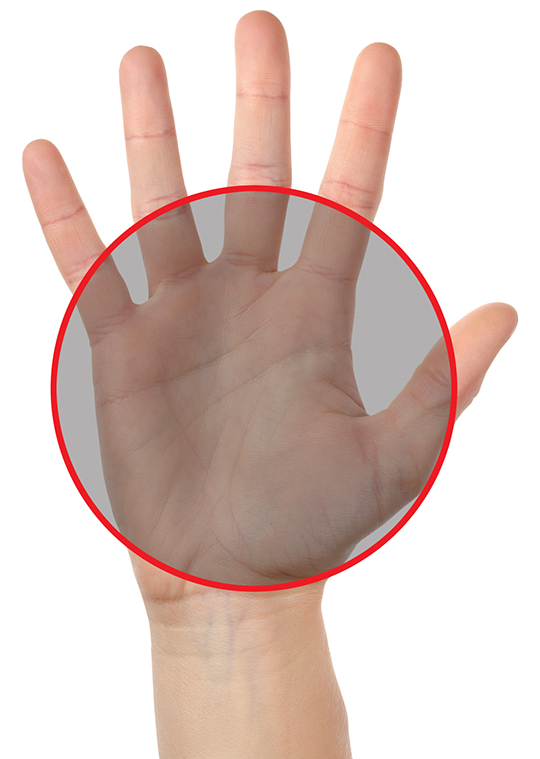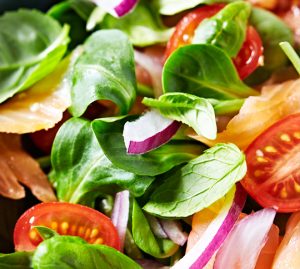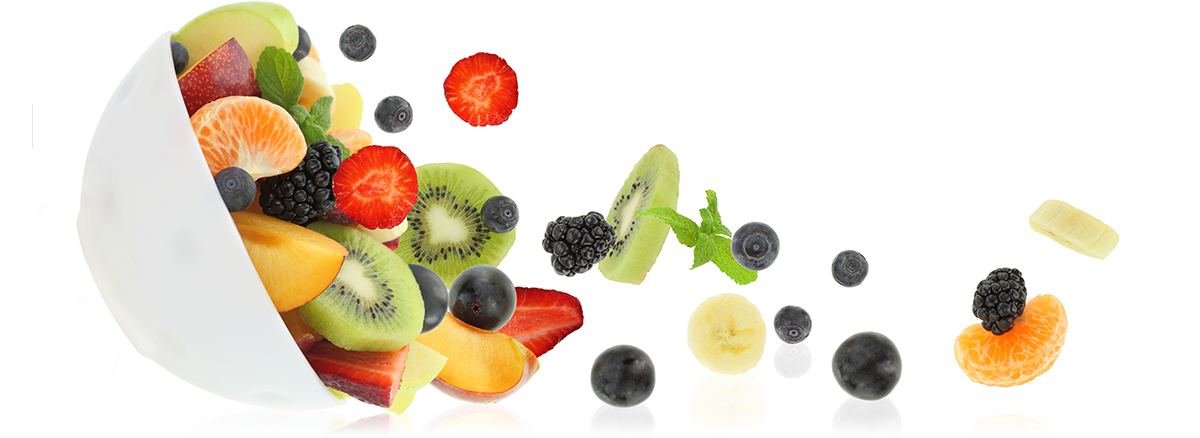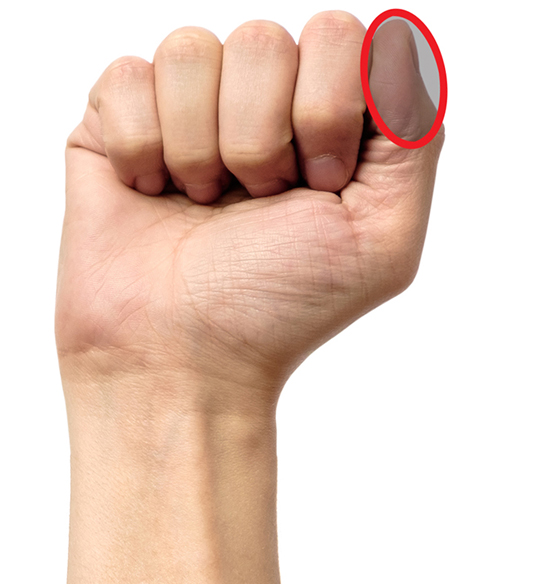





You have the what. Now it’s time for the how much portion of our meal plan. First, I’ll give you the scientific method, just in case you prefer numbers. For the rest of us, there is a no-brainer way to make sure you’re dishing out the correct proportions.
1.
It is recommended that you consume close to 1 gram of protein per ideal body weight pound per day. So let’s say you’re ideal weight is 175 pounds, you should consume anywhere from 120-170 grams of protein a day. Divide this in equal amounts over your 5-6 meals per day. That works out to be 25-35 grams of protein per meal.
Or you can skip all the math and keep in mind an important rule: the portion of protein at primary meals (breakfast, lunch, dinner) should be approximately the size of the palm of your open hand.
Go ahead. Look at your hand and imagine the top of your fingers and thumb disappearing … there’s your protein serving size.
SKIP THE MATH
Protein portion = palm of open hand

2.
You need about 1 to 1.5 grams of complex carbs per pound of body weight. Crunch the numbers, and you’ll see that our 175-pound guy needs 175–260 grams of carbs per day.
But you can forget that … if you remember that your serving of complex carbs at primary meals (breakfast, lunch, dinner) should be about the size of your closed fist.
SKIP THE MATH
Carb portion = closed fist
WHAT IF I’M “CARB-PHOBIC?”
If you feel that you are really sensitive to carbohydrates, just simply eat your “fist-sized” portion of carbs at the three main meals of the day (breakfast, lunch and dinner), and stick with a protein shake—and no carbs—during your mid-morning and mid-afternoon mini-meals.

3.
Good news: no measuring required! You can have as much of these foods as you like. But remember our goal is to consume at least 1/3 of our total plate from vegetables. Also, salads and veggies are amazing foods, but when we add more than one tablespoon of salad dressing we could be adding far too many additional fat calories. Be sure to check the label of your salad dressings. Balsamic vinegar and a tablespoon of olive oil with a little ground up sea salt goes a long way!

4.
Fruits provide a tone of nutritional value while being a little higher in sugars when compared to their veggie counterparts. This doesn’t mean we should avoid fruits, it’s the exact opposite. Fruits add great flavor and sweetness to our meals. Having 2–3 pieces of fruit a day can be a great addition to an already awesome veggie mix.

5.
Add one tablespoon of olive oil to your salad or vegetables, and you’ve got it covered. Or maybe you prefer to get your fat from avocados, nuts, seed or fish—salmon, for instance, doubles as protein and essential fat.
SKIP THE MATH
Fat portion = thumb size
ON PREPARING FOOD
We ask everyone to cook with minimal to no fat if possible. Baking, steaming, broiling, or grilling your food, and opting for healthy seasonings—such as spices, lemons, Balsamic vinegar are great ways to cook delicious meals while reducing the overall fat content. This will amplify the taste without amplifying the fat content of our foods.
